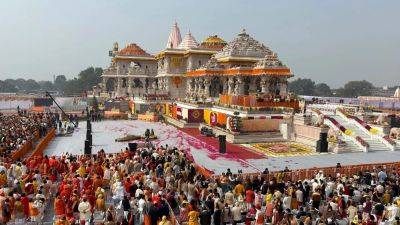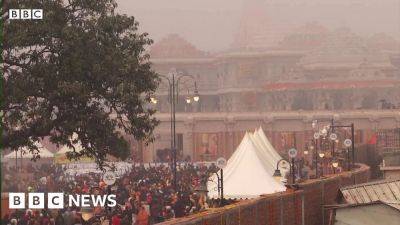Why India’s New Ram Temple Is So Important
Prime Minister Narendra Modi will inaugurate a gigantic new temple in the Indian city of Ayodhya on Monday, the conclusion of a mostly 20th-century odyssey in which Hindu nationalists eventually tore down a centuries-old mosque that has now been replaced with a structure devoted to the Hindu deity Ram.
Leading up to the temple’s consecration, public spaces around India were thrumming with excitement. Ram is one of the most revered gods among India’s Hindus, who make up about 80 percent of a total population of 1.4 billion. As the hero of the Ramayana epic, he is a king and a paragon of virtue, exiled from his native Ayodhya, who comes home for a jubilant coronation.
Islam does not appear in the Ramayana, having arrived in India only 1,000 years ago. But it is cast as the primary villain in the Hindu-nationalist telling of India’s history. Now, with a kind of spiritual and political homecoming for Mr. Modi, the Ram campaigners have the temple they had sought for decades.
First, the theological reason. Ayodhya is the original home of Ram. Its spot on the Sarayu River was where his just rule began. Diwali, India’s biggest holiday, marks the end of his 14-year ordeal of separation from the place.
Then there’s the more historical answer. In the area around Ayodhya, it was long believed that a Hindu temple had once stood on the land where the Babri Mosque was built in the 1500s. In 1949, soon after the British left and India became independent, Hindu activists smuggled idols representing Ram into the mosque, according to court documents.
That intensified the contest over the site, with Hindus and Muslims squabbling over access to it, and the police suppressing both sides. In the 1980s, reclaiming the site emerged as the







